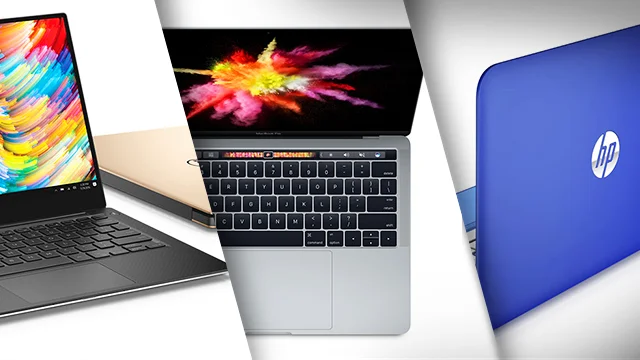
Laptop computers for college students are used for more than just completing homework and case studies. They are also used for web browsing, viewing movies, playing games, and a variety of other activities. There are numerous laptops available, ranging from entry-level to high-end gaming laptops. As college students, the laptop we choose is also determined by the budget we have. Choosing a laptop is difficult when there are so many factors to consider. Hopefully, this simple guide will help to simplify things.
Table of Contents
Determine your budget.
Laptops with various specifications and features start at Rs. 10,000 and go up from there. It is critical to decide on a ballpark figure for how much you will spend. This will aid in deciding between laptop categories and types.
Select an operating system
Windows 10 is currently one of the most popular operating systems. It comes pre-installed on almost every laptop these days. It is simple to use. Any software, from work to leisure to games, can be installed. There may be certain system requirements, such as Mac OS or Linux, depending on what you’re learning.
Choose the processor and RAM.
Laptops are powered by Intel and AMD processors. Choosing the best one is tricky. If you want to use your laptop primarily for schoolwork, basic games, and software, an Intel Core i3 or AMD A-series A6 or AMD A8 processor will suffice. Students that use heavy programming or graphic-intensive software may benefit from investing in laptops with Intel Core i5, Intel Core i7, or AMD A10 CPUs.Most laptops now come with 4GB of RAM, which is sufficient for daily operations such as using Microsoft Office, browsing the web, and watching movies. If you’re willing to spend a little extra, you might be able to locate choices with 8GB of RAM.
Determine how much storage you require.
You’ll have a lot to store as a college student. Documents, presentations, images, movies, music, and much more can be found. Most laptops now include hard drives with capacities ranging from 500 GB to 2TB or higher. A 500GB hard drive will suffice for any program installation, but if you intend to install games and store movies, you’ll need something larger. Don’t worry if you’re on a tight budget and can only afford a 500GB drive. You can either acquire a larger storage capacity external hard disc later on.
Select the graphics card
On laptops, there are two sorts of graphics solutions: integrated and discrete. The integrated ones are often slower, whereas the discrete ones are more performance-oriented. If you’re just planning to use your laptop for browsing and viewing movies, a laptop with an integrated graphics card would suffice. Laptop discrete graphics card solutions are typically powered by AMD or NVIDIA. AMD refers to its cards as Radeon, whereas NVIDIA refers to its solutions as GeForce.These GPUs (graphics processing units) provide dedicated graphics memory, allowing them to run graphically heavy software and games.
Select a battery
A laptop’s battery is just as vital as its processor and RAM. As a college student, you may need to transport your laptop to and from class. You might not always have the opportunity to charge it at college. A high-capacity battery can endure for hours. Looking at the rating is an easy approach to determining the capacity of the laptop’s battery. A 3-cell, 6-cell, or 9-cell battery is typically labeled. This information is normally available at the merchant or on the manufacturer’s website.
Select a portable one.
After you’ve decided on the technical parameters for your laptop, you must consider the design, size, weight, and display size. Look for a lightweight laptop if you will be carrying it to and from college every day. If you’re staying in a hostel and need a computer for work, a larger screen size may be preferable. It can also be used to view movies, play games with pals, read notes, and create presentations. Larger screen size also necessitates a wider, more ergonomic keyboard.
Laptop accessories that are a must-have
Some attachments are designed to safeguard your laptop, while others are designed to increase productivity. Carrying a laptop is more difficult than carrying books. The first item you should think about is a laptop bag. These backpacks are built with sections that allow you to carry your laptop and accessories safely. Some manufacturers include a free laptop bag with the laptop, so you don’t always need to buy one. Windows has an anti-virus program to protect your laptop from malware and viruses. Some manufacturers also provide pre-installed software. The majority of these are subscription-based products that require a one-time payment every year or so. If you want even more security, you can use third-party antivirus and firewall software.
Apple OS X
All MacBooks include Apple’s most recent desktop operating system, macOS Ventura. Overall, the operating system provides similar functionality to Windows 11, but with a distinct design that replaces Microsoft’s Start menu and taskbar with an applications dock at the bottom of the screen. Mac users get Siri instead of the Cortana digital assistant. They may also use Apple Pay to make purchases, receive phone calls or texts, and unlock their laptops with an Apple Watch. However, because no MacBook comes with a touch screen, macOS is not designed for touch. While Apple did introduce iPad apps to its laptops with macOS Big Sur (iPad and iPadOS apps can run natively on M1 and M2 Macs), you must rely on third-party software.

Leave a Reply